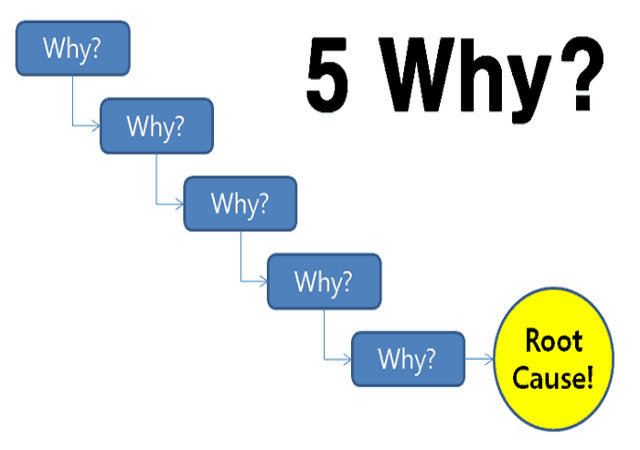Why Are We Killing So Many People in Hospitals?

History
I wrote this article over a decade ago. Read it and tell me (in the comments) if you think anything has changed.
DEATH TOLL

What kills more people in the US than:
- industrial accidents,
- highway accidents, and
- airline accidents
COMBINED?
Mistakes in HOSPITALS.
The technical term for these mistakes is “Sentinel Events.”
Estimates of the deaths caused vary. We use estimates because there aren’t accurate statistics on the total number of deaths caused by mistakes made in hospitals. There is no national reporting requirement or system.
Even though there is no national reporting requirement, studies show that despite almost 25 years of effort to stop sentinel events, no progress is being made. Some studies show the problem getting worse. We are not preventing sentinel events.
How big is the death toll? Definitely greater than 100,000 people per year in the USA (1999). Probably more than 250,000 (2016). One estimate put the death toll at 440,000 people per year in the USA alone (2013). At some hospitals in Australia (2007), it may be safer to play Russian Roulette than to be admitted.

Read on to see why this holocaust continues.
WHY NO IMPROVEMENT
Why haven’t we improved? There are several factors that make improvement difficult:
1. Healthcare Complexity
2. Poor Root Cause Analysis (RCA)
3. Inadequate Corrective Actions
4. Not Enough Management Attention
We will review these factors and what we can do about them in the following sections.
1. HEALTHCARE COMPLEXITY

Medical practice keeps getting more complex. More complex technology. More drugs with more interactions. More pressure to work faster and be more efficient. The result? More chances to make errors with catastrophic consequences. At the same time, cost-cutting and downsizing to save money (driven by insurance and government measures) means fewer staff to catch errors.
Healthcare complexity calls for increased, proactive application of system reliability and human factors solutions to improve healthcare delivery. Intelligent, resilient design can make complex systems reliable. Plus, staffing needs to be assessed to ensure adequate coverage for error-catching activities.
2. POOR ROOT CAUSE ANALYSIS

After a decade of using RCA to analyze sentinel events, the lack of progress indicates a failure of healthcare root cause analysis.
What’s wrong? Most healthcare facilities use inadequate RCA systems, including fishbone diagrams, 5-Whys, and healthcare-derived root cause checklists. These “simple” techniques are inadequate to analyze complex healthcare sentinel events.
Not only are the RCA systems inadequate, but the RCA training is also inadequate. People are assigned to investigate healthcare sentinel events with little or no training. They are lucky to attend a free session of a couple of hours at a professional society meeting or sponsored by an insurance provider.
Healthcare investigators face another factor that makes root cause analysis even more difficult: BLAME. More than your everyday blame that comes with every accident. Medical malpractice seems designed to make people less open – less willing to cooperate wholeheartedly with investigators.
Furthermore, doctors who are independent contractors in many hospitals are naturally suspicious of investigators who seem to question their judgment and put their credentials at risk. Is it any wonder that we haven’t made progress?
Despite some of these factors that are difficult to address, picking an advanced root cause analysis system and getting people trained shouldn’t be hard. After all, there is TapRooT® Root Cause Analysis!
The TapRooT® System was designed to be used for simple and complex investigations. It has been applied successfully in healthcare settings and has improved the performance of complex systems. The 2-Day and 5-Day TapRooT® Courses have been customized for on-site training of healthcare investigators to help them with demanding investigations.
3. POOR CORRECTIVE ACTIONS
Inadequate root cause analysis is just the start. Typically, we see the weakest corrective actions applied to prevent repeat sentinel events.
Those familiar with the terminology “hierarchy of controls” applied in industrial and process safety may know what I am pointing out. Healthcare corrective actions often include the application of new standards that depend on human reliability. When these fail, investigators recommend some of the “re” corrective actions. What is a re- corrective action? Read about them HERE:

These are the weakest possible corrective actions. More effective corrective actions include another type of “re” corrective action. Removing the hazard or the target. Or re-engineering the process to improve system reliability and decrease human error without adding additional tasks for people to cope with.
These types of corrective actions and more are the results of TapRooT® Investigations when investigators apply the suggestions in the Corrective Action Helper® Guide and apply Safeguards Analysis to develop their solutions.
4. MANAGEMENT INATTENTION

One might say that the cause of all the previous problems is inadequate management attention to performance improvement at healthcare facilities. Part of this inattention can probably be attributed to the fact that most healthcare administrators aren’t trained in advanced performance improvement techniques. Even the few with Six Sigma training don’t know about advanced root cause analysis. Therefore, they don’t know what action they could take to make performance improvement happen.
Plus, hospital administrators need to become more involved in the analysis, review, and approval of sentinel event investigations. Involvement can bring them face-to-face with the challenges people are experiencing in the field. Trained managers reviewing a SnapCharT® Diagram can see beyond blame to real action to improve performance. They can see their contribution to errors that come from understaffing and fatigue. They can become a knowledgeable part of the team fighting sentinel events.
SIMPLE PLAN TO PREVENT SENTINEL EVENTS
Each day, hundreds of lives are lost because we haven’t won the battle to defeat sentinel events.
Don’t wait for the entire healthcare industry to wake up to the problems and the solutions. Don’t wait for regulatory requirements to force your facility into action. Start today with the tools that are at hand.
1. Bring the message to YOUR management. Get them involved. They should feel that EVERY sentinel event at their facility is their personal failure to address the causes!
2. Adopt an advanced root cause analysis system – TapRooT® RCA – including the latest root cause analysis software to help your investigators learn from small incidents to prevent major sentinel events.
3. Get the root cause analysis training that your facility needs. This includes training for hospital administrators, staff, and your performance improvement experts.
Start with a customized TapRooT® Course for senior executives. Follow that with a 2-Day TapRooT® Course for those who are frequently involved in sentinel event investigations and a 5-Day TapRooT® Course for those who facilitate sentinel event investigations.
See our public TapRooT® RCA Courses HERE.
4. Once you complete steps 1-3, you can start your continuous improvement efforts. Get continuous improvement rolling by attending the TapRooT® Summit to find out what other leaders in the field of healthcare (and other industries) are doing to continuously improve.
Don’t wait. People are DYING waiting for improvement to occur. Start improving patient safety performance today!
(Reprinted by permission from the February Root Cause Network™ Newsletter, Copyright © February 2012)
Note 1

The 2023 TapRooT® Summit started with a talk by RaDonda Vaught. She was criminally prosecuted for an error she made that resulted in a patient fatality. To me, her riveting story was proof of how little the healthcare industry has learned during the patient safety movement.
Don’t let another death occur before implementing plans to improve your healthcare root cause analysis.
If you want to know more about improving healthcare root cause analysis or RaDonda’s story, contact Marcus Miller at 865-539-2139.



